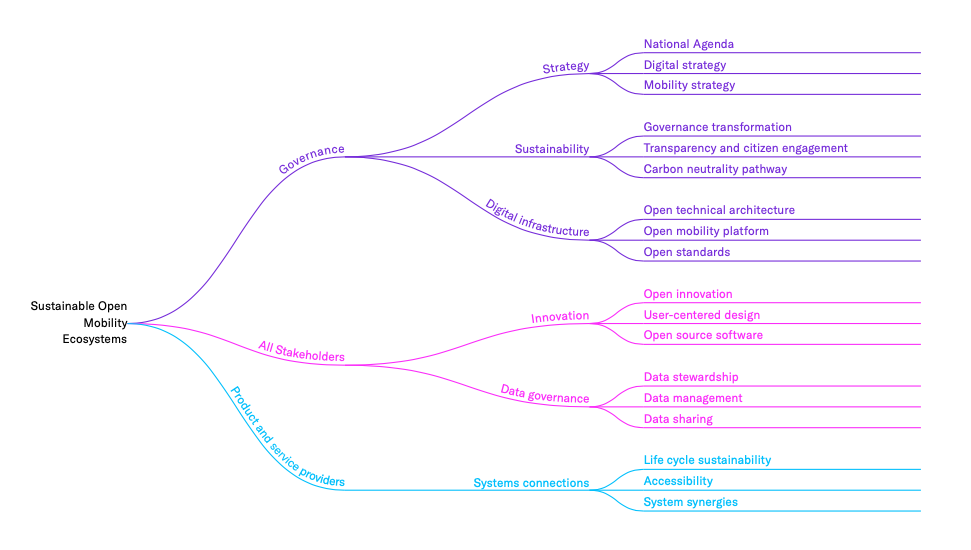Complex systems are prevalent throughout the natural, built and social worlds. Whether ecosystems, societies, financial markets, knowledge dissemination or normative social behavior. They comprise many agents and elements that depend on or are influenced by each other.
Cities are complex systems that include politics, cultures, natural resources, ecology, climate, economic and built environment sub-systems. In addition to these, there is a web of actors, networks and conditions that make up urban transportation systems at different scales. All of these systems and sub-systems need to be navigated and transformed in order for global carbon emissions reductions to be achieved, not to mention to facilitate liveable and sustainable cities, regions and societies.
The Taxonomy
The Sustainable Open Mobility Taxonomy translates the complexity of the different aspects that are needed for sustainable and open mobility as a subset of a bigger but interconnected city or regional system. It contains a number of seemingly independent activities and stakeholders that need to align or work together to enable the systemic changes for sustainable mobility system, which flow on to economic, environmental and social systems at larger scales.
The Taxonomy is a resource that provides an interactive overview of the conceptual scope of a sustainable mobility system underpinned by open innovation, emerging technologies and holistic systems thinking to achieve triple bottom line sustainability. It provides examples of how different stakeholders, such as governments and mobility service providers, can work together to navigate the current waves of digital transformation and disruption in ways that are mutually beneficial.
Application
The taxonomy was developed as a result of extensive literature review, liaison with transport experts and ideation workshops.
It should be noted that some branches of the taxonomy at the third level are more important than others. For example, a national strategy that sets out targets and an implementation pathway to enable open innovation, adaptive governance and mobility digitization at city scales is desirable to enable progress across a national territory, but it is not essential if there is an ambitious and effective city or metropolitan government authority driving progress at that scale.
In addition to the online taxonomy, the Open Source Lab is developing further materials to support in-person debate and collaboration. Whether and how different aspects of the Sustainable Open Mobility Taxonomy should be prioritized, methods for implementation, as well as identification of additional best practice examples will be the subject of further content and workshops by the Open Source Lab coming soon.
